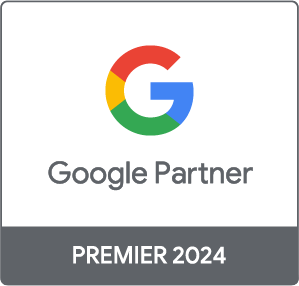Wouldn’t it be quality to score a 10/10 Quality Score on all keywords throughout your Google Ads account? We certainly think so; it’s a diagnostic tool that gives you insight into how you can improve your ads, keywords, and landing pages. Sound useful?
Allow us to detail what the Google Ad’s Quality Score actually is, the components involved in its calculation, the benefits behind improving it, and the tips and tricks to achieve the aforementioned mythical 10/10 score.
What Is Quality Score?
Ever wondered how the user experience of your ads compares to that of your competitors? If so, look no further than the Quality Score metric – which does just that. On a scale of 1 to 10, with 1 being the lowest & 10 being the highest, the Quality Score is Google’s rating of the overall user experience that your ads and landing pages provide when users search for your keywords.
This tool isn’t a key performance indicator – you shouldn’t optimise your account towards Quality Score, but it should instead be used to identify areas that require further optimisation.
Benefits Of Improving Your Quality Score
In essence, the higher the Quality Score, the more your ad meets the needs of your prospective customers. Wanting to maintain its status as the go-to search engine of choice, Google rewards the time and effort you’ve taken for your ads to be more relevant and helpful to users by charging you less on average for each click.
By taking the time to find ways to boost your Quality Score, not only are you working towards a more well-optimised account, but you can also take advantage of higher ad rankings & click-through rates and lower average click costs.
How Is Quality Score Calculated?
Your keywords’ Quality Score is calculated based on the combined performance of three key components:
- Expected click-through rate – the likelihood your ad will be clicked on when a user sees it.
- Ad relevance – how accurately your ad matches the intent behind a user’s search.
- Landing page experience – how relevant, useful & responsive your website’s landing page is to users who click on your ad.
Each of the Quality Score components listed above are rated with an appraisal of: ‘Below Average’, ‘Average’ or ‘Above Average’. These ratings are determined in comparison with the ads that have shown for the exact same keyword, over the last 90 days.
No one, barring Google, of course, knows exactly how the components above weigh in the Quality Score calculation, but it is widely accepted that the expected click-through rate plays the biggest role of the three. Google’s chief economist, Hal Varian, said that it constitutes as much as 60% of the calculation.
Let’s discuss ways to boost your expected CTR, as well as improve your ad relevancy and the landing page experience.
How To Achieve a 10/10 Quality Score In Google Ads
The first step to achieving a 10/10 Quality Score is to review the ratings of the three components within the metric’s calculation. If you notice that any fall short of the much sought after ‘Above Average’ assessment, you can look to improve upon them by:
Boosting your click-through rates
- Write relevant and compelling ad copy that draws in your target audience.
- Ensure that your ad text matches the intent of your keywords.
- Highlight a unique benefit your product or service provides, such as Free Next Day Delivery.
- Include compelling calls to action; such as ‘Buy, Sell, Order, etc.’
Making your ads more relevant
- Ensure that your ad text matches the intent behind your user’s searches.
- Organise your campaigns and ad groups with a segmented structure, making use of as many ad groups, and closely linked keywords, as necessary. This results in your ads being better tailored to your keywords, and as such, to your user’s searches.
- Group your keywords into themes. These can be based on your products, services or other categories. For example, if you’re advertising scarves, you can have a group of keywords for ‘Carabao Cup Winners Scarves’ and another group of keywords for ‘FA Cup Winners Scarves’.
Improve your website’s landing page experience
- Direct people to precisely what they’re searching for. If a user searches for ‘Liverpool Quadruple Winners 2021/22 Scarves’ and clicks on your ad for ‘Liverpool Quadruple Winners 2021/22 Scarves’, the URL they should be sent directly to should be your offering of ‘Liverpool Quadruple Winners 2021/22 Scarves’.
- Keep your language and messaging consistent from the ad all the way to the landing page. It’s also imperative your landing page follows through on the ad’s offer or call to action.
- Make your website mobile-friendly. Ease of navigation is something users value even more on mobile websites.
- Improve loading speed. New research by Google has found that 53% of mobile visitors will leave if a webpage hasn’t loaded within three seconds.
To conclude
If you implement the recommendations listed above, there’s a high chance you’ll boost the Quality Score of your keywords across the board; directly impacting your account’s performance through the medium of lower average click costs, improved click-through rates & higher ad rankings.
Be sure to review your Quality Scores on a regular basis, as, by their nature, they are in a state of flux and subject to the changes made by your competitors, on their ads & landing pages.









